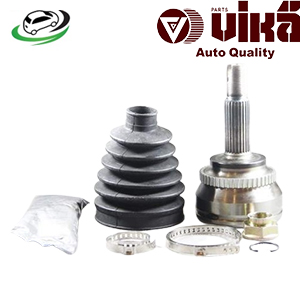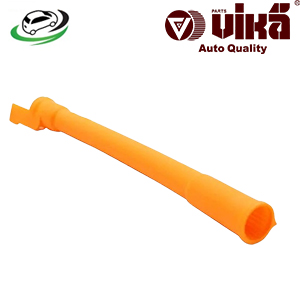-20%
Get Engine Valve Cover Gasket Audi A3 8P-V6 3.2L/3.2L/TT MKI/ VW Golf IV/Jetta IV/R32 MKIV/R32 MKV/Touareg 1 V6 022103483E
The engine valve cover gasket is a critical component of an internal combustion engine, playing a crucial role in ensuring the engine’s efficiency, longevity, and overall performance. Situated between the valve cover and the engine cylinder head, this gasket prevents oil leaks and protects the engine from contaminants. Understanding the function, construction, types, signs of wear, and maintenance of the engine valve cover gasket can help in maintaining your vehicle’s engine health. Here’s an in-depth exploration of the engine valve cover gasket in 1000 words.
Function of the Engine Valve Cover Gasket
The primary function of the engine valve cover gasket is to create a seal between the valve cover and the engine cylinder head. This seal is essential for several reasons:
- Prevents Oil Leaks:
- The engine valve cover gasket prevents engine oil from leaking out of the top of the engine. It seals the gap between the valve cover and the cylinder head, ensuring that oil remains contained within the engine’s top end.
- Protects the Engine:
- By sealing the engine, the valve cover gasket helps to keep out dirt, debris, and moisture that could otherwise enter the engine and cause damage. This protection is vital for maintaining the engine’s performance and longevity.
- Maintains Proper Engine Operation:
- A well-sealed valve cover gasket helps to maintain the correct oil pressure within the engine. Proper oil pressure is crucial for the effective lubrication of engine components and for preventing overheating.
- Reduces Engine Noise:
- The gasket helps to dampen engine noise, providing a quieter and more comfortable driving experience by minimizing vibrations and sounds from the engine’s top end.
Components of the Engine Valve Cover Gasket
The engine valve cover gasket is composed of several key components that work together to ensure a proper seal:
- Gasket Material:
- Material Choices: Engine valve cover gaskets are typically made from materials such as rubber, cork, silicone, or a combination of these materials. Each material has its own advantages in terms of flexibility, durability, and resistance to oil and heat.
- Function: The gasket material is designed to provide a tight, leak-proof seal between the valve cover and the cylinder head. It must be able to withstand the high temperatures and pressures within the engine compartment.
- Gasket Shape and Design:
- Shape: The gasket is usually shaped to match the contours of the valve cover and the cylinder head. It may have specific cutouts or grooves to accommodate features such as bolts, oil passages, or spark plug tubes.
- Design Features: Some valve cover gaskets include integrated seals or beads to enhance the sealing capability and improve the gasket’s performance.
- Sealant:
- Material: In some cases, a sealant or adhesive is used in conjunction with the gasket to ensure a complete seal.
- Function: The sealant helps to fill any minor gaps or imperfections between the gasket and the mating surfaces, providing additional protection against leaks.
Types of Engine Valve Cover Gaskets
Engine valve cover gaskets come in various types, each suited to different engine designs and applications:
- Rubber Gaskets:
- Material: Made from high-quality rubber, such as nitrile or EPDM (ethylene propylene diene monomer).
- Advantages: Rubber gaskets are flexible, durable, and resistant to heat and oil. They provide a reliable seal and are commonly used in modern engines.
- Cork Gaskets:
- Material: Made from cork fibers bonded with a resin.
- Advantages: Cork gaskets offer good sealing properties and flexibility. They were more common in older engines but are less frequently used in modern applications due to advances in gasket materials.
- Silicone Gaskets:
- Material: Made from silicone rubber.
- Advantages: Silicone gaskets are highly durable, resistant to extreme temperatures, and provide an excellent seal. They are often used in high-performance or specialty applications.
- Composite Gaskets:
- Material: Made from a combination of materials, such as rubber and metal or rubber and cork.
- Advantages: Composite gaskets combine the benefits of multiple materials, providing enhanced sealing properties and durability. They are used in a variety of engine types and applications.
Benefits of a Properly Functioning Valve Cover Gasket
A well-maintained and properly functioning valve cover gasket provides several benefits:
- Prevents Oil Leaks:
- Protection: A good gasket prevents oil from leaking out of the engine, which helps to maintain proper oil levels and prevents potential damage to the engine.
- Protects Engine Components:
- Cleanliness: By keeping contaminants out, the gasket helps to protect delicate engine components from dirt and debris, which can affect engine performance and longevity.
- Reduces Engine Noise:
- Quieter Operation: The gasket helps to reduce vibrations and engine noise, contributing to a more comfortable driving experience.
- Maintains Engine Efficiency:
- Proper Lubrication: By preventing oil leaks, the gasket ensures that the engine maintains proper lubrication and oil pressure, which is essential for optimal engine performance and efficiency.
- Prevents Overheating:
- Heat Management: The gasket helps to manage engine heat by ensuring that oil remains within the engine and is effectively circulated for cooling.
Signs of a Worn or Failing Valve Cover Gasket
Over time, the engine valve cover gasket can deteriorate due to exposure to high temperatures, oil, and other environmental factors. Recognizing the signs of a worn or failing gasket is important for timely maintenance and repair:
- Oil Leaks:
- Symptom: Visible oil leaks around the valve cover area, such as oil puddles or drips on the engine or the ground, indicate a failed or worn gasket.
- Burning Oil Smell:
- Symptom: A burning oil smell inside the vehicle or coming from the engine compartment can be caused by leaking oil dripping onto hot engine components.
- Engine Misfire:
- Symptom: Oil leaking onto the spark plugs or ignition coils can cause misfires or rough engine performance.
- Low Oil Levels:
- Symptom: Consistently low oil levels may indicate a leak caused by a faulty valve cover gasket.
- Engine Overheating:
- Symptom: If oil leaks lead to inadequate lubrication or cooling, the engine may overheat, resulting in warning lights or gauge readings.
- Oil on Engine Components:
- Symptom: Oil residue or stains on the valve cover or surrounding engine components can indicate a gasket leak.
Maintenance and Replacement
Regular maintenance and timely replacement of the engine valve cover gasket are essential for ensuring the proper function and longevity of the engine:
- Inspection:
- Routine Checks: Inspect the valve cover gasket periodically for signs of wear, damage, or leaks. During routine maintenance, check for oil residue or leaks around the valve cover area.
- Replacement Interval:
- Manufacturer’s Recommendations: Follow the manufacturer’s recommendations for gasket replacement intervals. Some gaskets may need replacement as part of regular maintenance or if signs of failure are observed.
- Professional Replacement:
- Expert Installation: Replacing the valve cover gasket typically requires removing the valve cover, cleaning the mating surfaces, and installing a new gasket. It is recommended to have a professional mechanic perform this task to ensure proper installation and sealing.
- Proper Installation:
- Sealing Surface Preparation: Ensure that the mating surfaces of the valve cover and cylinder head are clean and free of old gasket material or debris before installing the new gasket. Proper torque specifications should be followed when reinstalling the valve cover.
- Sealant Application:
- Sealant Use: If applicable, use the recommended sealant or adhesive in conjunction with the gasket to ensure a complete and effective seal.
Follow us on Facebook for more parts.



